Plunderteig is the dough that your flakiest Teilchen dreams are made of! Once you learn to make these, you may never risk ordering a ‘just okay’ croissant from a bakery. Instead, you become a bit high maintenance and just wait until you can make them when you get home.
The butter-layered, ‘laminated’ dough is a blank canvas for your creativity and the basis for many German croissants, pastries or danishes. Such as the irresistible, iconic Franzbrötchen (German croissant cinnamon rolls). Not going to lie, you will need some patience and time, but you will be hugely rewarded!

What is Plunderteig
Plunderteig is a yeast dough that is laminated with butter. Laminating is a process of chilling, rolling out and folding the dough in itself, distributing butter throughout many layers. This makes the dough flaky and croissant-like and the perfect blank canvas for the German pastries of your dreams!
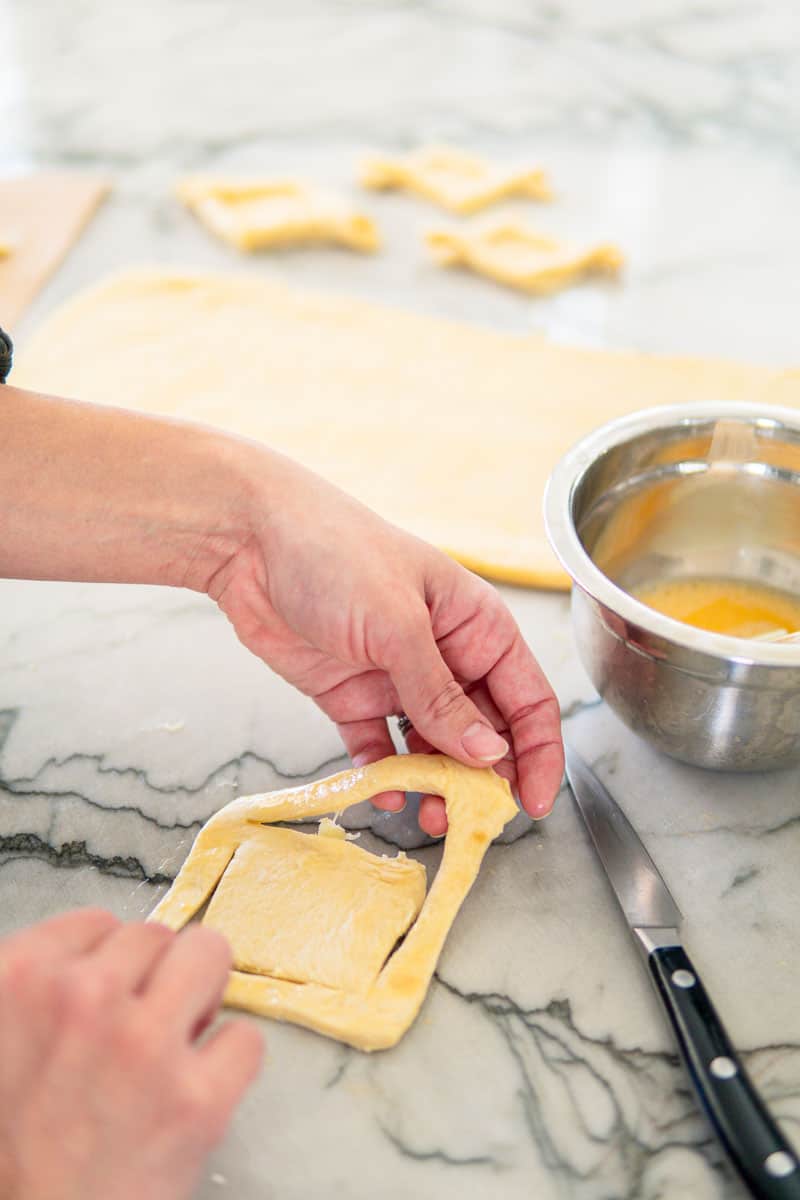
While this German croissant dough is a similar process to making croissants, it does not require folding in quite as many layers, leaving it a bit denser than croissants (but I want to say more delicious, too!).
I use Plunderteig for Franzbrötchen, which are German-style cinnamon rolls from the German harbor city Hamburg (also check out my chocolate Franzbrötchen) as well as many other German pastries. Add any cornstarch-thickened, sweetened fruit and maybe some streusel and you're good to go!
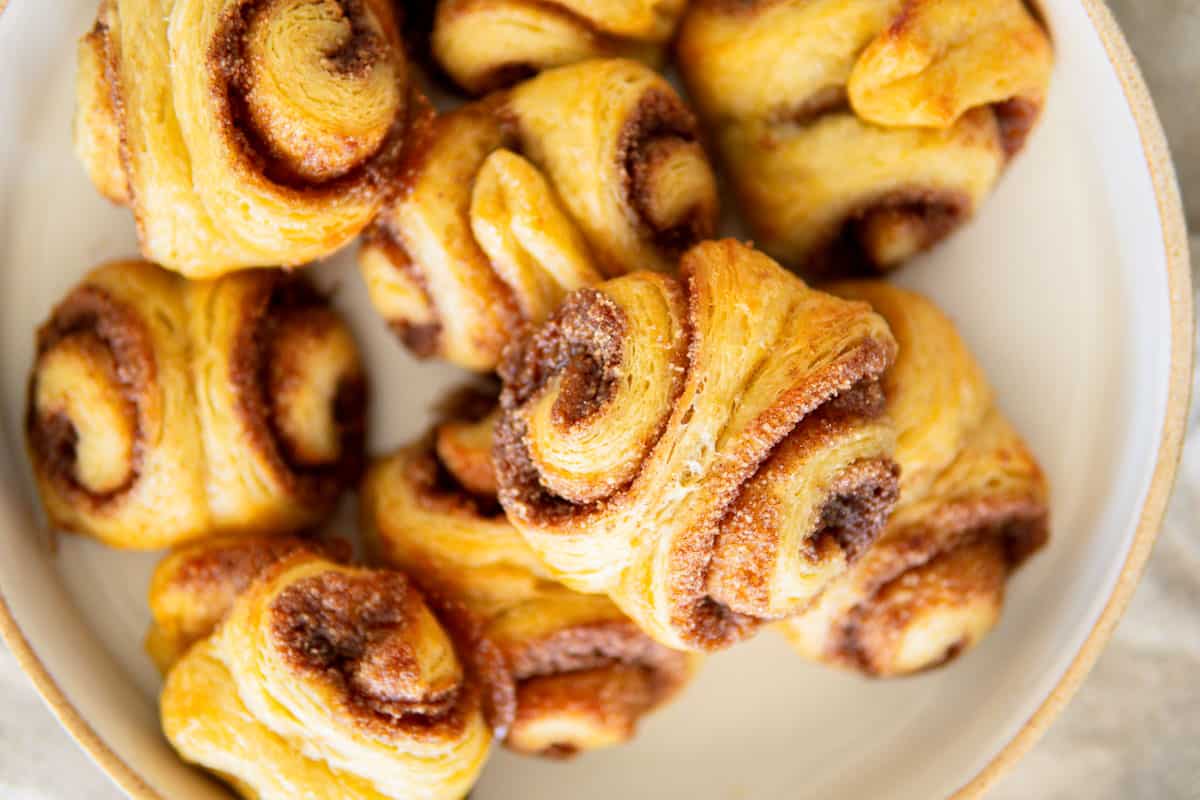
How to make dough for croissant
It took me 5 batches to figure out a reliable, repeatable process for making this German croissant dough called Plunderteig at home. By the way, if you find yourself in the middle of summer, trying to stay cool, this is NOT the time to try out this dough.
The secret to my success? Chilling, chilling, chilling and patience. To the point where the chilling may seem excessive, but believe me, it's not (and it's early spring here and not hot by any means).
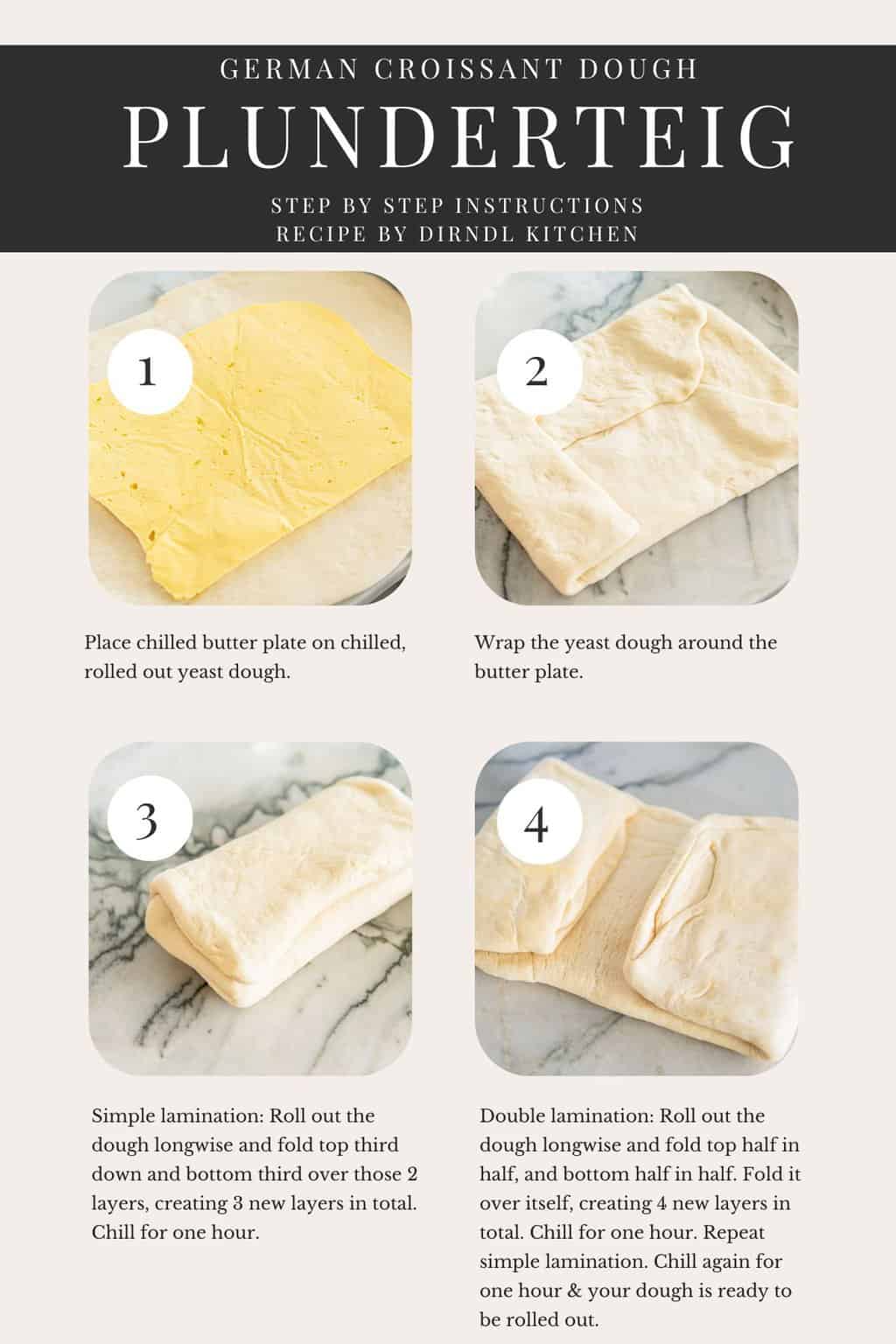
I am including enough tips below for you to be successful with making your own Plunderteig for some really amazing homemade pastries and croissants! I shared these with friends at my birthday party and got RAVE reviews.
- Make your yeast dough and chill it. Then make your butter plate and chill it. I actually chill mine in the freezer for 15 minutes or until the yeast dough is rolled out and ready for my butter plate (no more than ½ inch thick or about 1 cm).
- Roll out the yeast dough to perfectly envelope the butter plate from all sides. You want no butter peaking through and the dough to overlap on the seams.
- Simple Lamination. Now roll out the packaged butter plate long ways and fold the top down and the bottom up, creating 3 layers of dough. Wrap in plastic and chill for one hour (or more if your kitchen is warmer). In German, the repeated layering of the dough is called 'Tourieren.'
- Double Lamination. Roll out the dough again into an even longer rectangle, then fold the top down into 2 layers, meeting halfway AND the bottom up into 2 layers, meeting halfway. This process creates 4 layers. Wrap in plastic and chill for one hour.
- Simple Lamination. Now repeat step 3 and chill again for another hour.
- Your dough is ready to be rolled out to be about ¼ inch thick (about ½ cm) and used for the German croissant dough pastries of your dreams!
It may help you to watch my short video on how to make Plunderteig.
Croissant Dough Tips
- When in doubt, chill: And I mean it. This is not a dough you want to rush. If the butter gets too soft, it likes to tear up the dough and make its way through. Not cool. What's cool is giving the dough some extra time to chill and stay compact.
- Dough Is tearing: If you witness any kinds of tearing of the dough and butter peaking through, STOP and put it back in the fridge for another hour.

- Work ahead: I have made the main dough (up to step 3 on my chart) the day before, then let it rest overnight and continued the next day. I have also chilled the dough overnight ready to be rolled out (up to step 4 on the chart), and that worked great, too! This comes in handy when wanting to make fresh pastries for breakfast the next morning!
- Freezing Plunderteig: If freezing your Plunderteig, make sure you're rolling it out completely, then dust it in flour, wrap it in plastic and freeze it on a baking sheet. The day before using it, transfer the dough to the fridge. When ready to use roll out a little bit if needed, then cut out your pastries.
Ingredients
The ingredient list for German croissant dough is by no means fancy! Here it's all about the technique and because you're using such simple ingredients, make sure they're great quality. I like using grass-fed butter and milk, natural mineral salt and organic sugar and flour.

- Flour. All purpose, organic flour is what I use for this recipe. It's always worked great, so no need to use a specialty flour.
- Salt. I use a mineral salt like this pink himalayan salt.
- Sugar. This recipe uses just a bit of sugar and I like using organic cane sugar.
- Milk. I always have organic milk (grass-fed preferred) in the house for our kids. You'll need a good amount of it for this recipe.
- Yeast. Since it's impossible to find fresh yeast in America, I use active dry yeast and let it bubble up in the warmed milk. It works!
- Butter. I always buy grass-fed, salted butter (no need to reduce the added salt in the recipe) and I do believe it makes a difference in the taste of this dough.
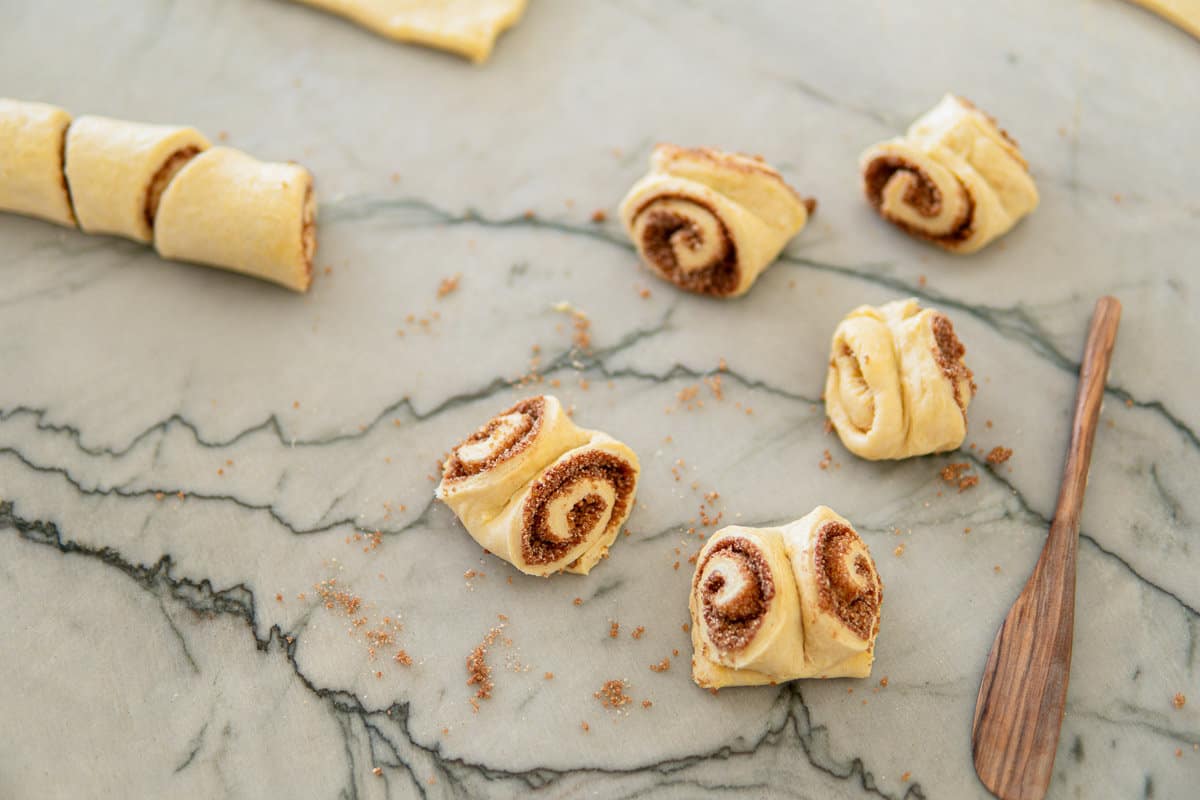
What is German puff pastry called?
Turns out, most German pastries (called Teilchen there), are made from Plunderteig, a German croissant dough.
Video
Watch this short video on how to make German croissant dough. It's perfect for making so many different German pastries and croissants!
Subscribe to my weekly email newsletter for more addictive German recipes!

Plunderteig (German Croissant Dough)
Equipment
- 1 Rolling Pin for rolling out the dough
- 1 Kitchen Scale optional
- Parchment Paper for rolling out the butter plate
- Plastic Wrap or gallon-sized freezer bag for storing the dough in the fridge in between laminations.
Ingredients
Plunderteig Dough
- 500 grams all-purpose flour
- 10 grams salt
- 40 grams granulated sugar
- 300 milliliters milk Luke warm
- 5 grams active-dry yeast
Butter Plate
- 225 grams butter Room temperature. I use grass-fed butter and think it really makes a difference in taste.
- 30 grams all-purpose flour
Instructions
- Combine the yeast and Luke warm milk and let stand for 5 minutes or until starting to get bubbly. Mix together with other dough ingredients and knead until you have a smooth, elastic dough. Chill in the fridge for 30 minutes.500 grams all-purpose flour, 10 grams salt, 40 grams granulated sugar, 300 milliliters milk, 5 grams active-dry yeast
- Mix the room temperature butter and flour for your butter plate, then roll it out in between two sheets of parchment paper to be a rectangle shape and no more then ¼ inch thick (about ½ cm). Chill it in the fridge for about 30 minutes to an hour. I actually chill mine in the freezer for 15 to 20 minutes or until the yeast dough is rolled out and ready for my butter plate.225 grams butter, 30 grams all-purpose flour
- Roll out the yeast dough into a rectangle shape and large enough to perfectly envelope the butter plates from all sides. You want the dough to generously overlap on the seams and no butter should be peaking through.
- Simple Lamination. Roll out the packaged butter plate long ways and fold the top down and the bottom up, creating 3 overlapping layers of dough. Wrap in plastic and chill for one hour (or more if your kitchen is warmer).
- Double Lamination. Roll out the dough again into an even longer rectangle, then fold the top down into 2 layers, meeting halfway AND the bottom up into 2 layers, meeting halfway. This process creates 4 layers. Wrap in plastic and chill for one hour.
- Simple Lamination. Now repeat step 3 and chill again for another hour.
- Your dough is ready to be rolled out to be about ¼ inch thick (½ cm) and used for the German pastries of your dreams like my Franzbrötchen (German cinnamon rolls).
- When ready to bake your pastries, shape them first. Then let them sit at room temperature for another 30 minutes to an hour (or until wiggly when gently shaking the baking sheet). Brush on an egg wash made from equal parts of egg yolk and water. Bake for 12 to 15 minutes at 350 convection setting.
Video
Notes
- When in doubt, chill: And I mean it. This is not a dough you want to rush. If the butter gets too soft, it likes to tear up the dough and make its way through. Not cool. What's cool is giving the dough some extra time to chill and stay compact.
- Dough Is tearing: If you witness any kinds of tearing of the dough and butter peaking through, STOP and put it back in the fridge for another hour.
- Work ahead: I have made the main dough (up to step 3 on my chart) the day before, then let it rest overnight and continued the next day. I have also chilled the dough overnight ready to be rolled out (up to step 4 on the chart), and that worked great, too! This comes in handy when wanting to make fresh pastries for breakfast the next morning!
- Freezing Plunderteig: If freezing your Plunderteig, make sure you're rolling it out completely, then dust it in flour, wrap it in plastic and freeze it on a baking sheet. The day before using it, transfer the dough to the fridge. When ready to use roll out a little bit if needed, then cut out your pastries.

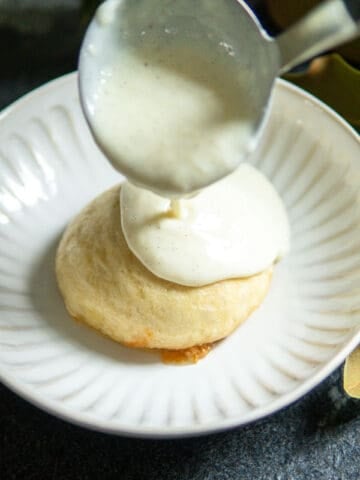

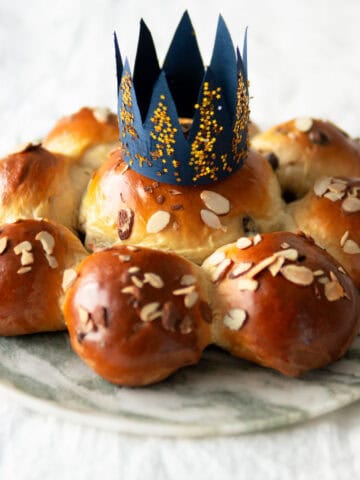

Leave a Reply